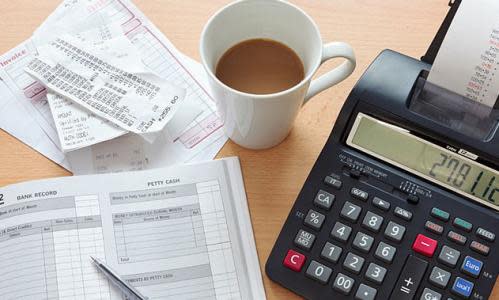Working from home: could you be eligible for up to £125 in tax relief?
Millions of people who have spent the last few months working at their kitchen tables are being encouraged to apply for tax relief using an online form that could return them up to £125.
At the beginning of October, HM Revenue and Customs (HMRC) launched an online portal offering employees a hassle-free way to claim the relief without the need to provide receipts or to make complicated calculations.
The government said this week that just under 55,000 people have so far applied online, which suggests millions more who have been told to work at home could still make a claim.
The tax relief is offered to workers provided they were told by the employer, rather than chose, to work from home – and provided they have not received home expenses payments directly from their company.
HMRC’s interim director general of customer services, Karl Khan, says: “We want everyone to get the money that they are entitled to, so we’ve made the online service as easy to use as we can – it takes just a few minutes to make a claim.”
He says once the application has been approved, the portal will adjust an individual’s tax code for the 2020-21 tax year. The employee will receive the tax relief directly through their salary and will continue to receive the adjustment until March 2021.
What’s it worth?

If you go for the easy, no-receipts-required route, your claim will be based on the assumption that you have incurred costs of £6 a week while working from home and you will get back the tax that you would have paid on that sum. For basic rate taxpayers – those earning between £12,500 and £50,000 a year – the relief is worth 20% of the £6: £1.20 a week. Higher rate taxpayers (those earning £50,000-plus) can claim 40% or £2.40 a week.
If you end up working the whole tax year at home – from 6 April 2020 onwards, you will be able to reduce next year’s tax bill by £62.40 or £124.80 respectively. Many people may want to make the claim at the point they go back to work, or if the worst happens at the end of the tax year next April.
You can check if you are eligible through the Gov.uk portal.
The advantage of taking that route is that it is easy to apply and you don’t have to dig out any paperwork. If you work at home four days a week and still go into the office on the fifth, you can apply as if you only work at home. You don’t get a cash payment; your pay packet simply rises a little as you pay slightly less tax.
What if my bills are much higher?

If the sums above do not come close to the extra expenses that you have incurred, you can apply for relief on higher sums – although it’s more complicated, says Suzanne Briggs, a partner at the tax accountancy firm, Blick Rothenberg.
“Employees who have incurred significantly higher costs have two options,” she says. “Those who complete a self-assessment form each year simply add the claim to that. If you are lucky enough not to have to fill in an annual return, HMRC has a form – the P87 – that allows employees to claim back expenses up to a maximum of £2,500.”
You will need your employer’s name and PAYE reference (which you can find on your payslip or P60), and your job title.
Most workers won’t be able to claim the cost of their broadband as HMRC assumes that households would have this anyway
Tax adviser Suzanne Briggs
The HMRC website says that additional costs include things such as “heating, metered water bills, home contents insurance, business calls or a new broadband connection”. They do not include costs that would stay the same whether you were working at home or in an office, such as mortgage interest, rent or council tax.
In reality, Briggs says, employees can only claim the extra heating and electricity costs for the proportion of the house they occupy while working at home, or things such as telephone calls made for business reasons.
Most workers, she says, won’t be able to claim the cost of their broadband as HMRC assumes that households would have this anyway. However, you can register the cost of having to buy a laptop, or an office chair that you only use for work purposes.
Again, you won’t get back the full cost of the extra expenses, only tax relief on the total. So if you can show £500 of extra costs, as a basic rate taxpayer you will see your net wages increase by 20% or £100 – or £200 for higher rate taxpayers.
“Be aware you will have to demonstrate these extra costs and back them up with receipts. Most people will probably decide that the £6 a week, no-receipt claim is the easier option,” she says.

 Yahoo Finance
Yahoo Finance 